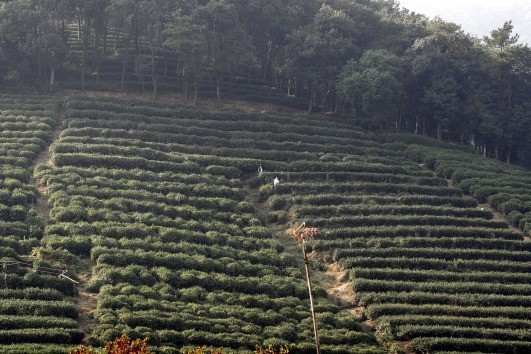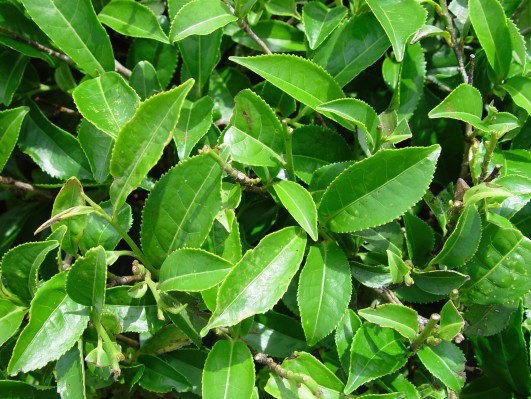A Chinese shrub named Camellia Sinensis
The tea tree (Camellia Sinensis), sometimes called simply tea, as the infusion of its leaves, is a species of shrubs of the Theaceae family. It is originally from the Far East. It is widely cultivated for its leaves, which, when dried and more or less oxidized, are used for the infusion of tea. It is a species close to the horticultural Camellia. The term Camellia Sinensis means word for word "Chinese camellia."



The tea plant is an evergreen tree, which can grow to 10 m to 15 m, up to 20 m for some varieties. Its height is limited by the pruning in cultivation. There are wild tea plants several hundred years old and more than 30 m tall. The tea plant grows on acidic soils between 1,000 and 2,000 meters above sea level, in a hot and humid climate.
One of the oldest tea plants in the world (1800 years old) is located in Pu'er in Yunnan Province in southern China. The Fengqing district in this province also boasts the world's oldest tea plant, 3200 years old and 10.2 m high, with a foliage of 11 × 11.3 m.
The alternate, evergreen leaves are elongated, elliptical, 4 to 15 cm long and 2 to 7 cm wide. They are glossy, dark green, relatively tough, with a rather thick texture. The petiole is short, 4 to 10 mm. The base is wedge-shaped, the apex is acute to acuminate, and the margins are sawn.
The flowers of the tea plant are white to light yellow, and measure between 2.5 and 4 cm in diameter. Solitary or in small groups of 3 or 4, they have five persistent sepals, five petals, sometimes more than 7 or 8, of light yellow or creamy-white color, and very numerous yellow stamens often fused together. The ovary is trilocular.
Fruits are capsules with loculicidal dehiscence, about 1.5 to 3 cm in diameter. The seeds can be pressed to give an oil.

